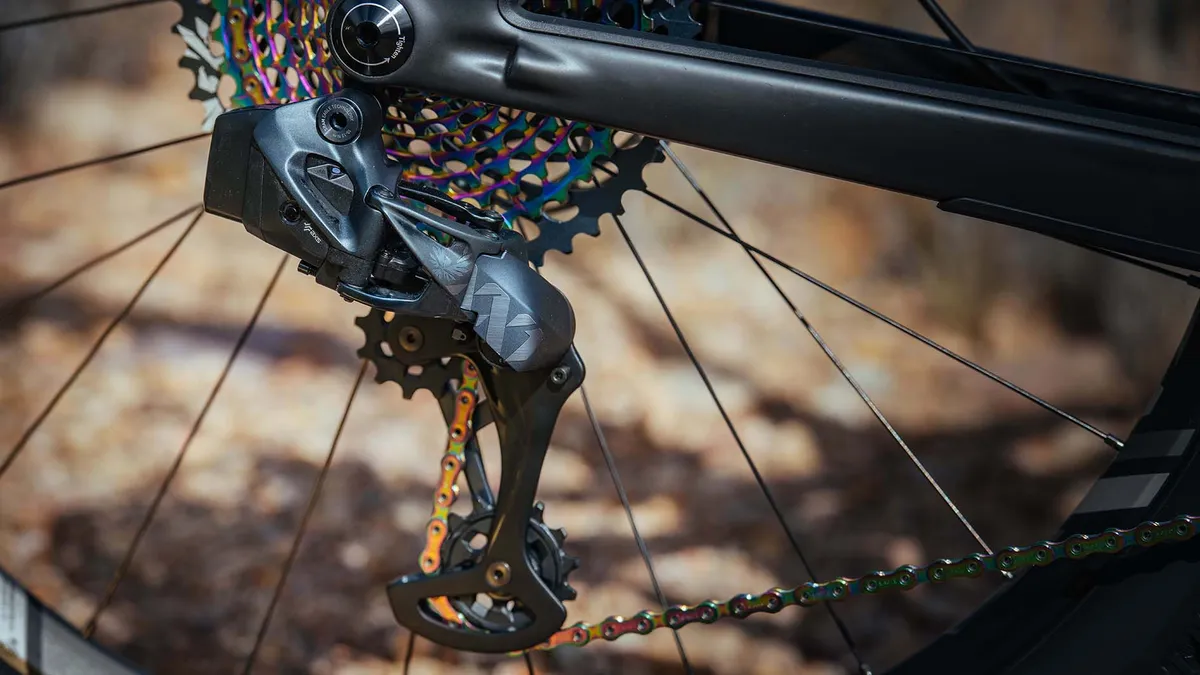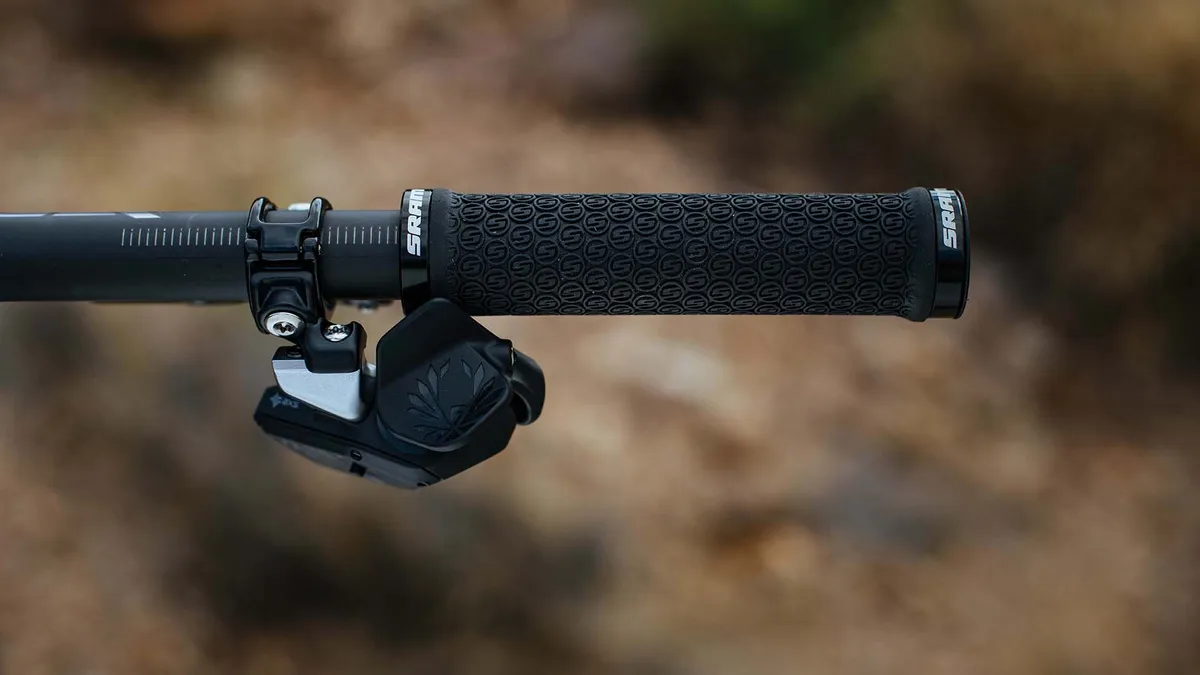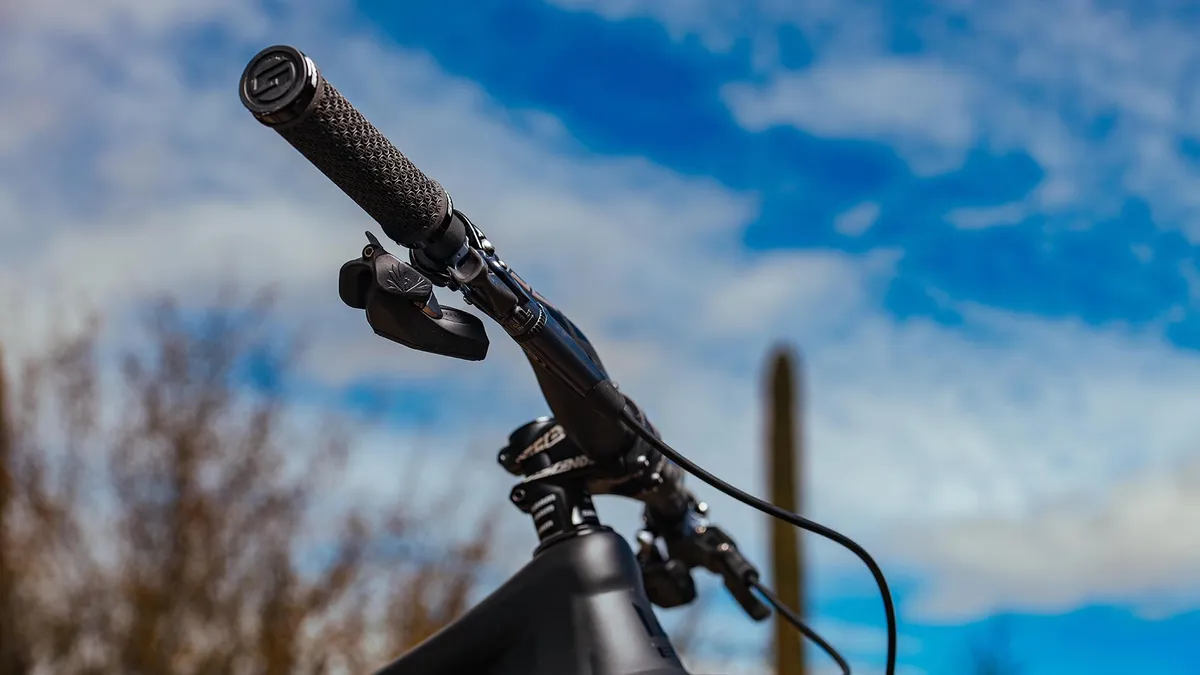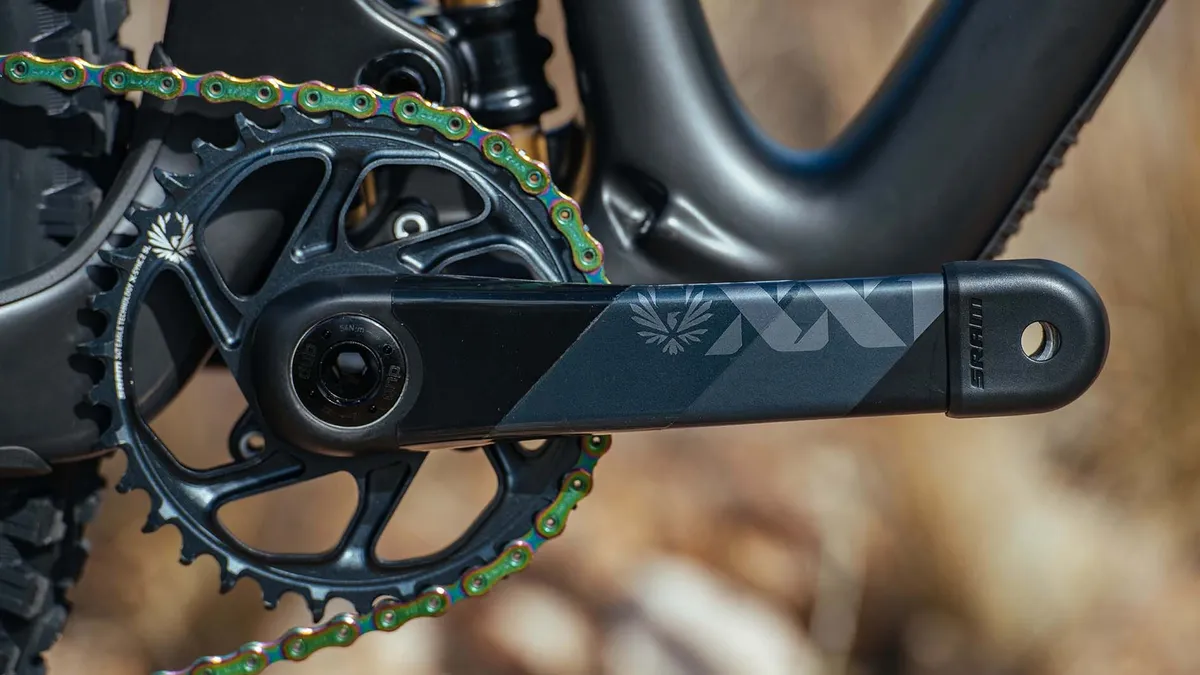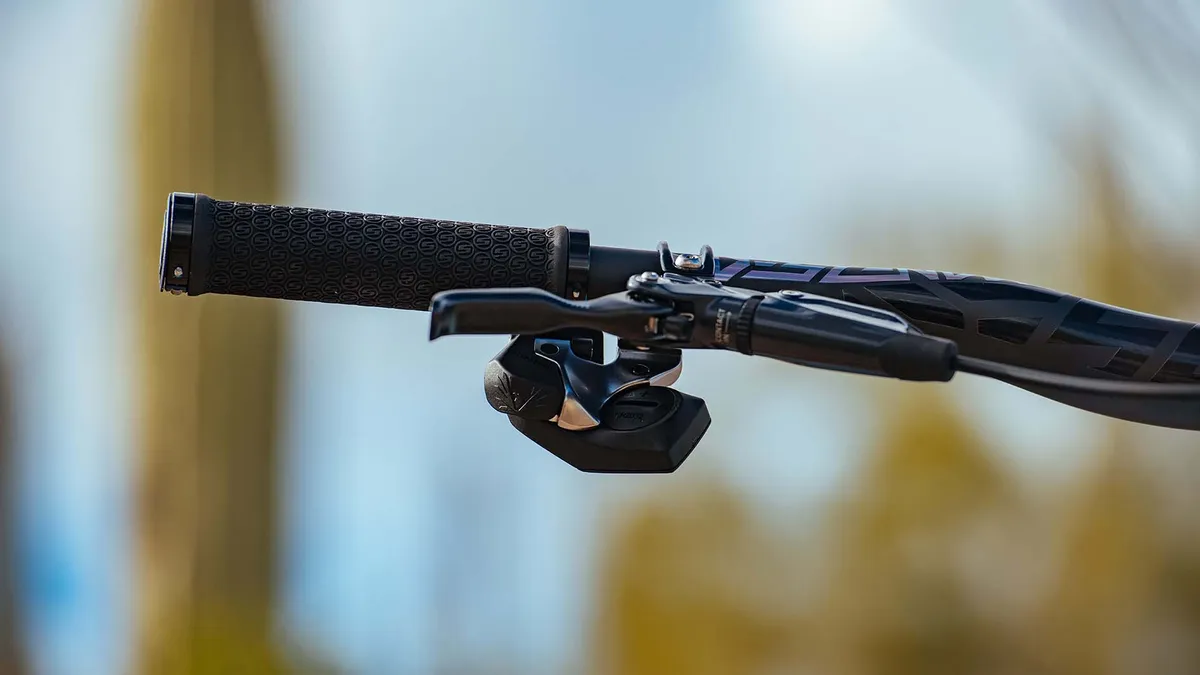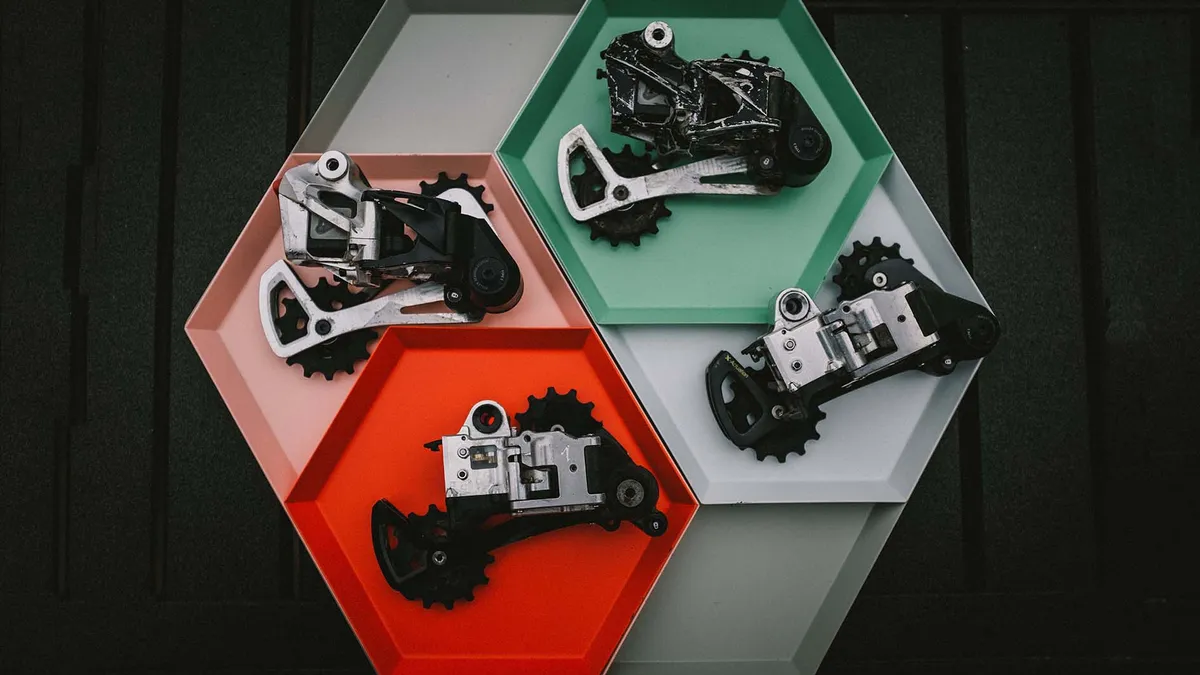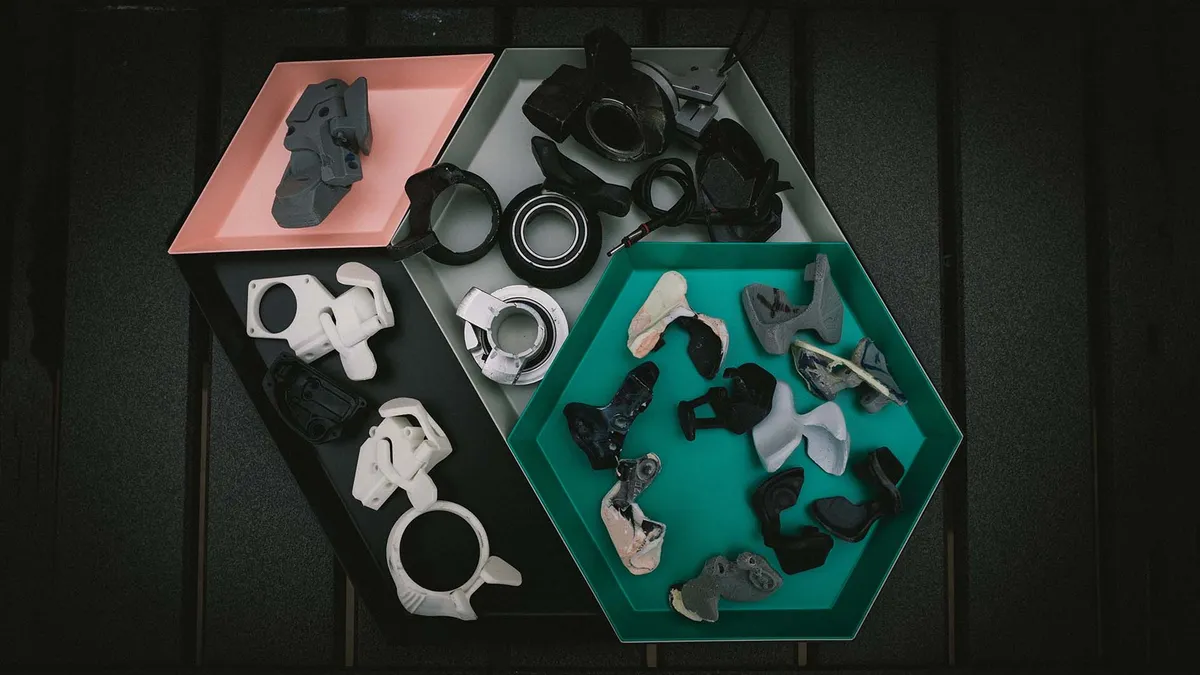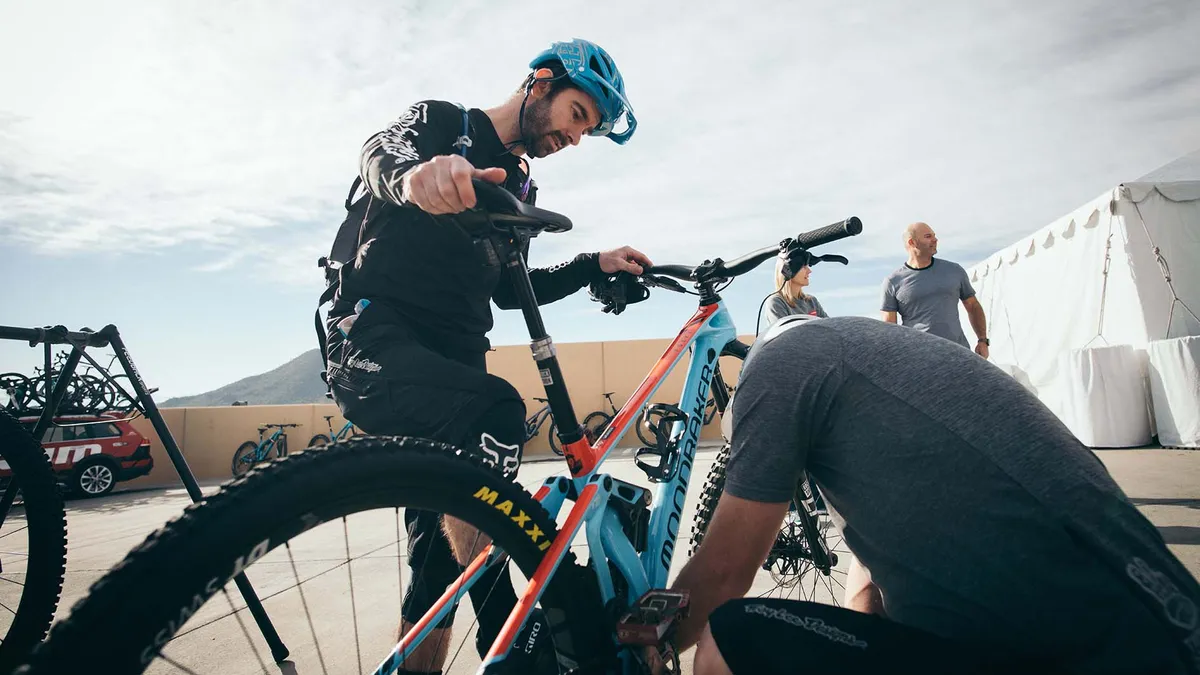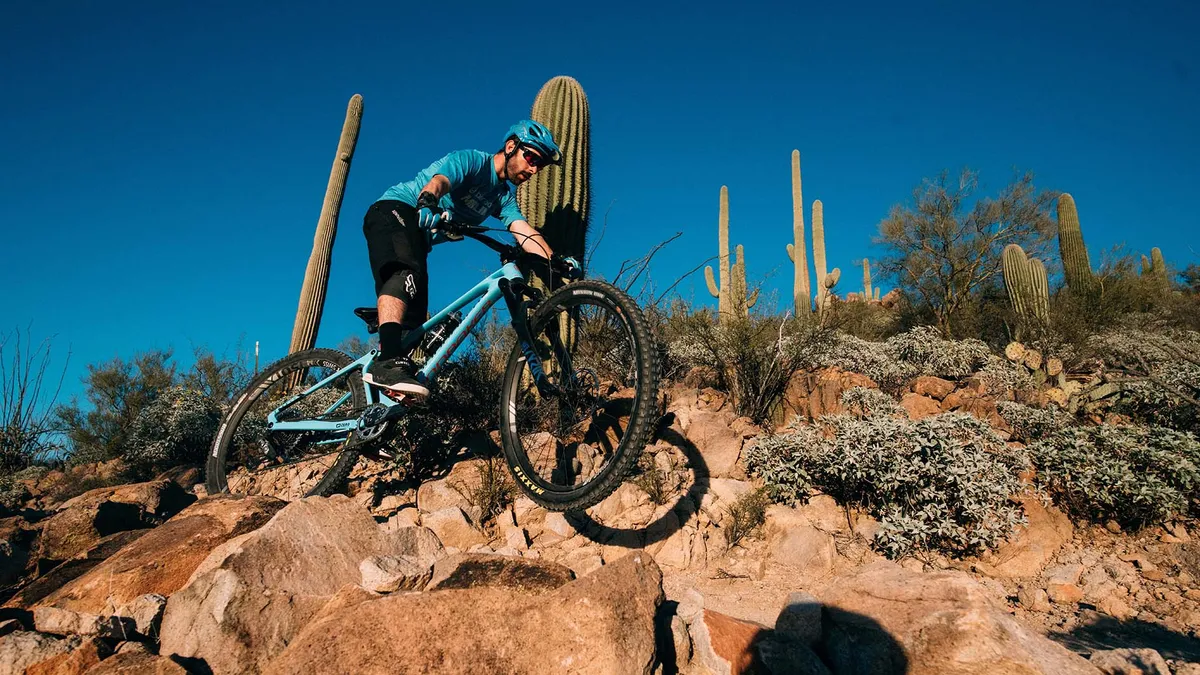SRAM’s wireless drivetrain, just like its Reverb AXS dropper post, uses the brand’s encrypted wireless network to let the shifter and rear derailleur communicate with one another, doing away with traditional gear cables completely.
This means that fitting it is a doddle, but you may need bungs to blank off any internal routing ports in your frame.
Included in the not-so-cheap £1,900 / $1,900 bundle is the all-new rear derailleur and shifter, along with the crankset, cassette, chain, battery and charger.
If that sounds like a little too much and you already have an Eagle drivetrain bolted to your bike, SRAM also has an upgrade kit, which consists of an AXS derailleur and shifter, plus batteries and charger for £975.
SRAM Overload Clutch
The rear derailleur houses the easy to fit/release 24g battery and is where much of the AXS innovation sits. As well as a gearbox, motor and Roller Bearing Clutch (which helps keep your chain taut), among other staple SRAM features, there’s the Overload Clutch.
This is designed to disengage the motor and gearbox should you whack your mech into a rock or stump, and allows the mech to move and then return to your last known shift location.
It’s a neat idea and one that I’ve put to the test on a number of occasions where it’s worked well each time, with no impact on shifting despite the mech being visibly scuffed up (I even bent a mech hanger during testing, but the derailleur remained fine). That’s good to know, when a replacement mech will set you back a cool £670.
It’s also got 10mm more ground clearance when compared to a standard Eagle mech, which should help when navigating deep ruts or slicing inside lines on boulder strewn trails.
SRAM Eagle AXS X01 weight
Cramming all of that tech into the derailleur does mean, at 388g, it’s 144g heavier than Shimano’s XTR mechanical offering, but SRAM’s lighter crankset, shifter and cassette, plus the lack of cables, mean it’s actually lighter overall, which is impressive.
The lightweight shifter (83g with bar clamp) looks a lot like the Reverb AXS remote but operates slightly differently.
The one-piece plastic paddle rocks on a central pivot to effectively create three different actuation points (two buttons, one of which can be actuated by pushing the paddle in two different places). There are two on the main face of the paddle and one – dubbed the ‘sprint’ button – on the rear.
[acast acastid="techtalk-doesweightreallymatter-" accountid="bikeradarpodcast" /]
SRAM Eagle AXS X01 paddle shifting options
Due to the single-piece design on the paddle, whatever function the top button on the front of the shifter does, it’ll be the same for the rear button because it’s operated using a shared part of the shifter paddle. So, if you set the top button to shift into higher gears, the rear button will do the same.
You can tweak button functionality using the AXS app on your smartphone, which connects to the components via Bluetooth. While it’s not essential to use the app in order to ride, I’d highly recommend it.
The paddle shape is very different to a regular shifter and it’s worth taking some time to try swapping what the buttons do until you feel totally comfortable with your shifting.
The app can also adjust the multi-shift function which, due to the light touch required to shift gears, is really beneficial and means you can decide whether it’ll shift across the entire cassette or one, two or three-sprockets at a time when you hold down the paddle.
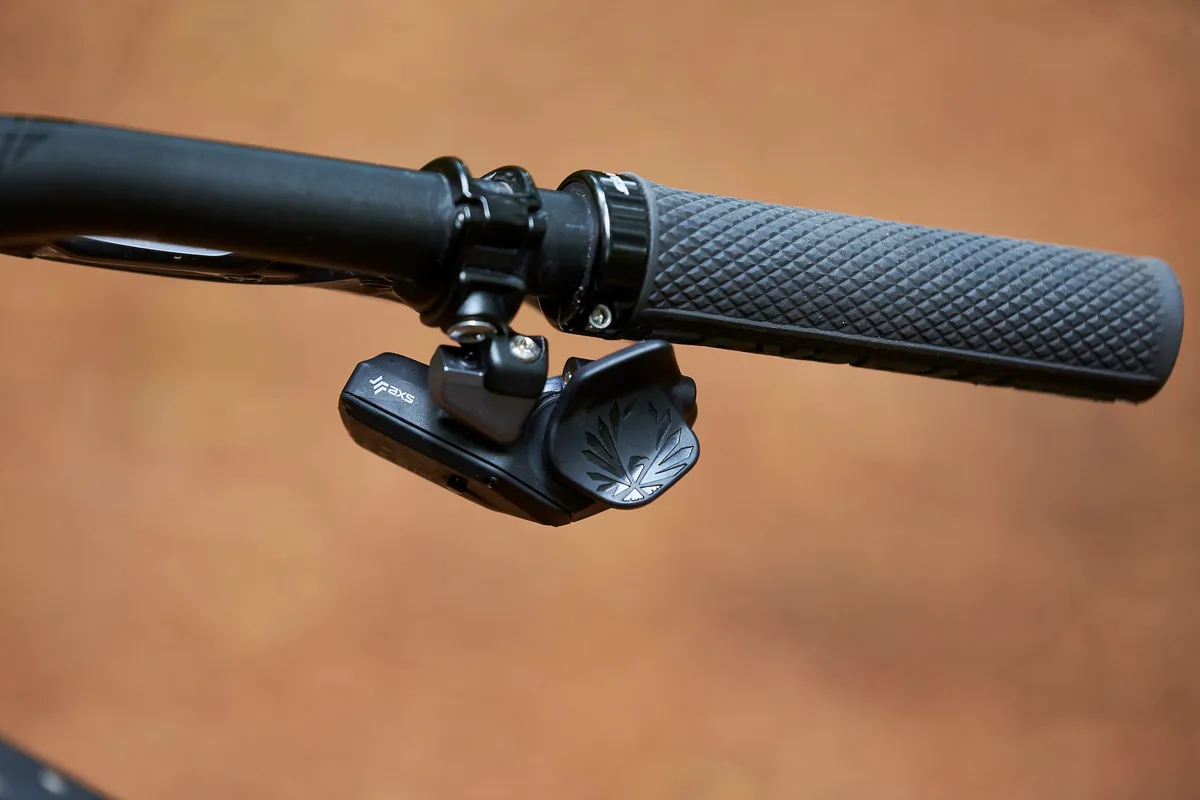
I not only fiddled with which button did what, but also played around with the angle and position of the shifter on the bar until I was happy with my setup and the gear changes felt properly intuitive.
The force to depress the paddle and actuate a gear change alters between the buttons too, and while it’s positive and easy enough to feel, it’s not as solid or defined as a mechanical shifter.
There’s little in the way of throw when you’re pressing the paddle – something that really takes a bit of time to adapt to – and the effort needed to shift into each gear remains consistent no matter which sprocket you’re shifting into.
I did make a few accidental shifts by knocking the shifter, as well as over-shifting until I altered the multi-shift function, but the more time I spent using the system, the less I found these things happening.
As a side note, I’d love to see SRAM offer a variety of paddle shapes down the line. Of course, there’s the potential to modify the current one if you so wish, just like we’ve spotted Nino Schurter doing over the past couple of seasons.
SRAM Eagle AXS X01 drivetrain set up
Getting the X01 Eagle AXS drivetrain fitted was a doddle. The lack of cables meant I took longer unthreading and removing the old transmission than I did fitting and setting up the AXS system.
SRAM includes a B-tension bolt guide to get the mech adjusted correctly, while setting the high and low limit screws is simply a case of getting them close enough to touch before backing them off a turn.
Fine tuning is done via the shifter and consists of little more than holding down the AXS button and tabbing the paddle in the desired direction you want to adjust the derailleur.
Mud, grit and wet gears
After many hours of riding and loads of mud, grit and hosepipe action, my Eagle AXS gearing is still shifting smoothly.
There was a point during a particularly grotty ride where shifting into the 50t sprocket became a little noisy, but a quick bit of ‘trimming’ (essentially gear indexing via the shifter – it’s as easy as twiddling a barrel adjuster) soon fixed this.
This meant that even under power, shifting has been relatively smooth, even in the mud with next to no noise or chain rub, no matter the gear or conditions.
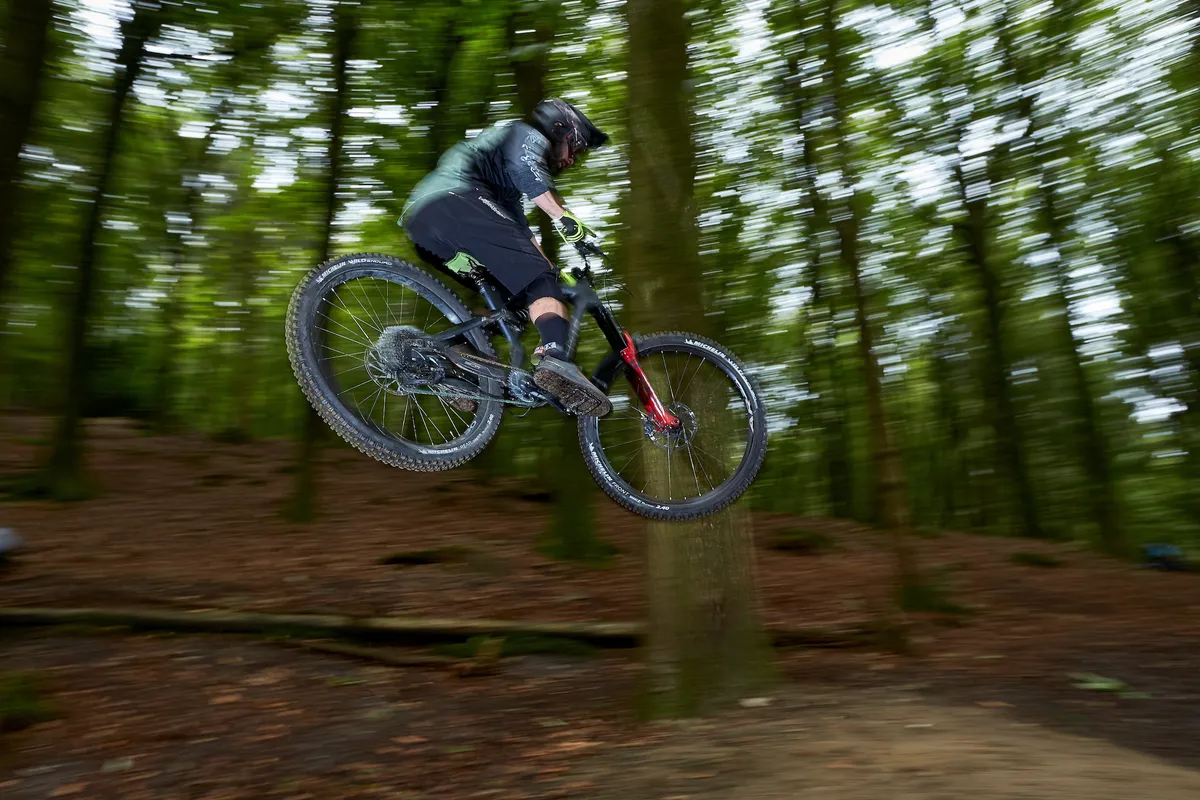
Shifts remain rapid and accurate too and I’ve not suffered any accidental over-shifts, even when punching through the gears under power.
Battery life is around 25 hours according to SRAM and, in use, that seems reasonably accurate. When you do need to charge the battery, removing it from the derailleur is easy and it’ll charge in about an hour.
I’d suggest a second battery if you’re looking to use this over a race weekend or multi-day trip, and these cost £50 a pop.
SRAM Eagle AXS X01 overall
So, should you buy this over a mechanical drivetrain? Well, that’s entirely up to you. We know there’s little wrong with the current crop of mechanical systems and they’re a chunk cheaper too, but if you’re in the market for something a little different and more state-of-the-art – and you want to rid your bike of as many of those pesky cables as you can – then AXS is well worth a look. Providing you have deep pockets, that is.
It helps that it works really, really well and, so far, my test sample has been totally trouble-free.
The feel of the shifter takes some time to get used to, but I’m a fan of the minimal throw and effort needed to shift, and found it to be a real plus for urgent shifts when riding unfamiliar terrain.
If you’re in the market for a highly innovative, well-executed drivetrain, SRAM’s new X01 Eagle AXS really delivers. It might not be the first to offer electronic shifting, but its wireless system is the best available.
